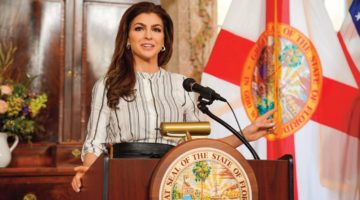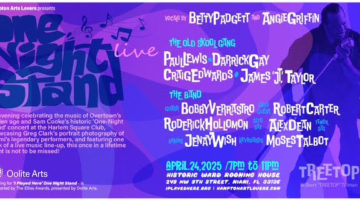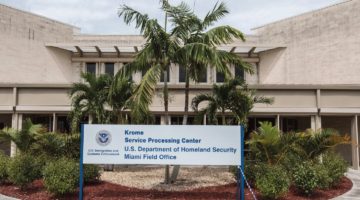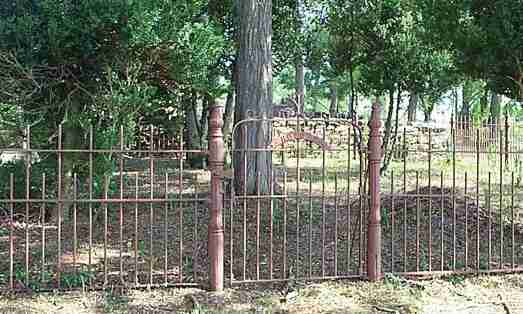Charlottesville,, Va. (AP) – Charlottesville native Diane Brown Townes knew some of her family history from records kept in an old tattered family Bible passed down for generations and she knew she had ancestors who were enslaved in the region.
But until recently, she had no idea some of her people may be buried in unmarked graves in a city park she’d spent lots of time in over the years or that she’s been living next door to relatives without knowing it.
The Charlottesville officials believe there are at least 43 enslaved people buried at Pen Park in unmarked graves. The graves are adjacent to a cemetery belonging to the Gilmer family, which owned a tobacco plantation on the land where the city-owned park and golf course are today.
The Albemarle-Charlottesville Historical Society started researching the probable identities of the people buried in the park last year. They have been able to identify and connect with several area residents likely to have ancestors buried in the park.
“For me, it’s finally being able to understand your feeling, a sense of being. I really never felt connected to history. I was always taught dates from a more white, patriarchal perspective,” Townes said.
The historical society is creating a database with the information they’ve uncovered about enslaved people in the area so descendants can make connections. The goal is to allow descendants’ voices to guide the process for creating some kind of memorial for the site.
“We’re trying to guide this process through the descendant focus. There’s so much history in our community that has not been told because it was never understood,” said Tom Chapman, executive director of the Albemarle-Charlottesville Historical Society.
PEN PARK SITE
The Gilmer family first took ownership of the land that is now Pen Park in 1760. George Gilmer, a Scottish immigrant, came to Williamsburg in the 1740s and later purchased the property in Albemarle County. The family ran the plantation until around 1812 and their holdings stretched across 4,000 acres and included land worked by enslaved people, according to an 1897 book about the family.
The Cravens owned the land from 1819 to the mid-1800s and the Hotopps lived on a smaller portion of the property from 1866 to the early 1900s. A small cemetery with the family plots has remained in the park.
According to Chapman, by the 1970s, the site was in disarray. Historians from the University of Virginia and community members decided to restore the plots for the Bicentennial in 1976. It was then that they noticed depressions in the ground outside the cemetery fence that could indicate graves.
Some 43 years later, in December 2019, the City Council approved $9,319 in funding for an archaeological investigation to determine if there were human graves in those depressions. Seven months later, ground-penetrating radar suggested the likelihood of 43 unmarked and unrecorded graves outside the walls of the three family plots.
There are roughly three rows of suspected graves to the east and behind the family plots and the historical society believes there may be more.
In August 2021, City Council allocated $2,500 to help the historical society determine the identities of the people buried outside the family cemetery and to identify living descendants.
In the year since, Sam Towler, Albemarle-Charlottesville Historical Society board member, dug up information from records about the families that held slaves. Because there was a legal dispute over the Gilmer estate, the legal documents revealed the names of people enslaved by the Gilmer family as of 1804.
Towler used personal property tax records, census data, marriage records, and lawsuit records to try to trace more people to the Gilmers. Towler was also able to locate records from 1845 and 1849 that list the people enslaved by the Craven family.
Towler has been able to identify surnames that tie back to people enslaved by the Gilmer and Craven families, names like Dickerson, Gilmore, Miller, Rone, Wormley, Anderson, Blue, Churchman, Flemming, Gibbons, Morton, Newton, Payne, Wales and Willis.
At a historical society presentation Townes attended, Towler spoke about some of his research about the families. Townes was shocked when she saw a familiar site on one of the slides – a photo of her aunt’s house. Towler said it had once belonged to one of the families.
“I was like, wait! He’s talking about my aunt’s house. I think he’s talking about my relatives!” Townes said.
Now, she was able to make more connections in that family Bible.
FILLING IN FAMILY TREES
The historical society has been able to connect with descendants of the Dickerson and Wormley families. One of them is Lorenzo Dickerson, a Charlottesville native and documentary filmmaker.
“Learning about Pen Park and the connection there, for me personally it just further connects me to this place that I call home,” Dickerson said. “It’s a very tight knit community. When you meet people, later on, you may find out that you’re more connected than you think you are. That’s the beauty of being from this place.”
Those connections run deep. In fact, Dickerson and Townes believe they may be related through the Dickerson family line. Townes had worked with Dickerson on some film projects in the past before she had any idea they could be connected.
“I’m just delighted to know and to say wow, we do have kinship ties to that core family,” Townes said.
Stephen Waller is a descendant of the Wormley family. He grew up in Charlottesville and now lives in Gainesville. He is grateful to have learned more about his family, because while he knew he had ancestors enslaved in Charlottesville, he didn’t have details.
“So much of (Black people’s) history was disrespected and erased in so many ways. People were buried without being given their names. People’s real names were taken away and they were given new names,” Waller said. “Families were denied a future of knowing where they came from.”
All three descendants The Daily Progress spoke to had something else in common – they all recall having an affinity for the Pen Park location before they knew about their ancestral connection.
Dickerson used to play on the play-ground at Pen Park as a child. Townes recalls her father loved visiting the park. Waller used to play golf on the golf course when he lived in the area. But perhaps the biggest coincidence was Waller’s family has held a family reunion at Pen Park for years.
“We had no idea. We’d have a picnic maybe 1000 feet away from these graves where some of our family could be buried,” Waller said.
After a news story about the Pen Park project aired on local television station NBC29 in February, Waller said he got an email from a man in Richmond who is also descended from people enslaved in the Charlottesville area. After watching the story, he believes he may be related to Waller. Now, they’re working together to see if they are indeed family.
“It really is a small world,” Waller said.
MEMORIALIZATION
The historical society isn’t sure exactly how to create a meaningful memorial at the site, how it will look or even how to partner with the city on a memorial. Currently, the city’s Historic Resources Committee is working on temporary signage to mark off the area. However, he wants to make sure descendant voices continue to lead that process.












No Comment